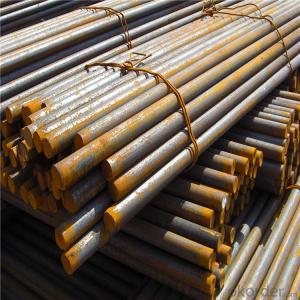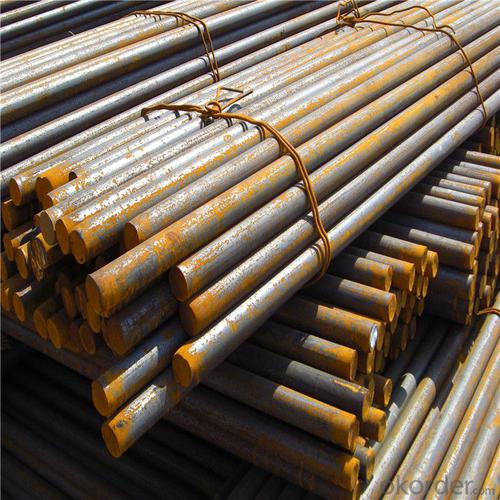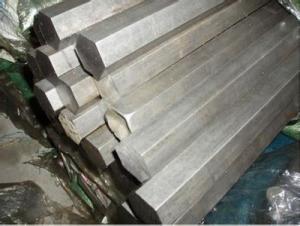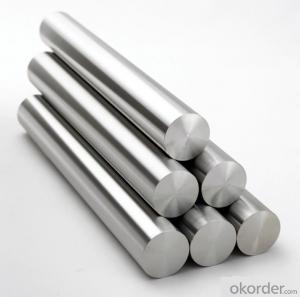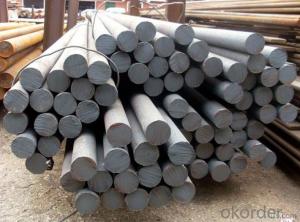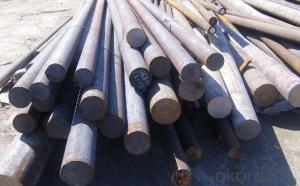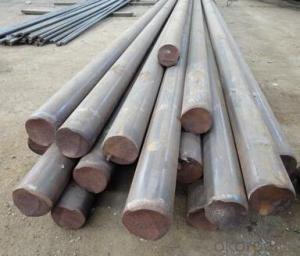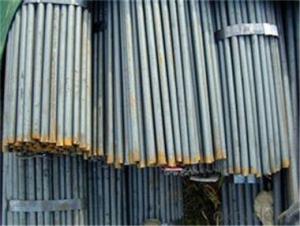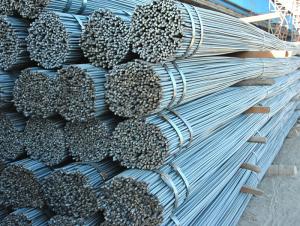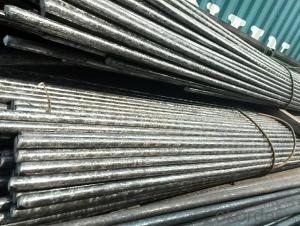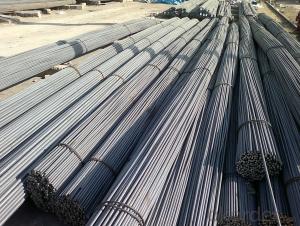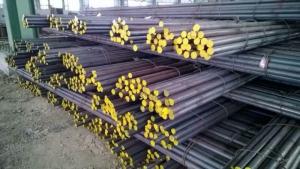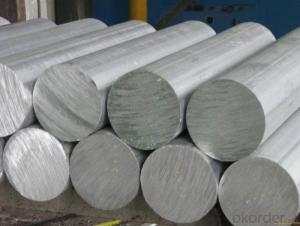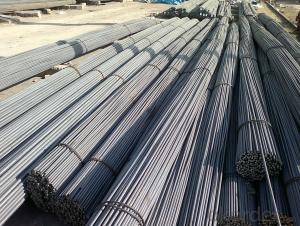SAE1040 Forged Steel Bar
- Loading Port:
- Tianjin
- Payment Terms:
- TT OR LC
- Min Order Qty:
- 100 m.t.
- Supply Capability:
- 500000 m.t./month
OKorder Service Pledge
OKorder Financial Service
You Might Also Like
Specification
SAE1040 Forged Steel Bar
Product Description of SAE1040 Forged Steel Bar
1. Steel grade: SAE1040, 40#, C40, S40C
2. Length: 6M-12M
3. Diameter: 16mm-300mm
4. Product range: round bar, flat bar, square bar
5. Technique: Hot rolled, forged, cold drawn
Specification of SAE1040 Forged Steel Bar
Material | SAE1040 | Round bar | Dia(mm) | 16-300mm |
Process | EAF + LF + VD + Forged + Heat Treatment (optional) | Length (mm) | Max 12m | |
Heat treatment | Normalized / Annealed / Quenched / tempered | Flat bar | Thickness(mm) | 8-500mm |
Delivery condition | Hot forged +Rough machined (black surface after Q/T)+ Turned (optional) | Width(mm) | 70-200mm | |
Test | Ultrasonic test according to SEP 1921-84 D/d | Length (mm) | Max 12m |
Chemical Composition of SAE1040 Forged Steel Bar
C | Si | Mn | Cr | Ni | Cu |
0.37~0.43 | 0.17~0.37 | 0.35~0.65 | ≤0.25 | ≤0.30 | ≤0.25 |
Photo Show of SAE1040 Forged Steel Bar
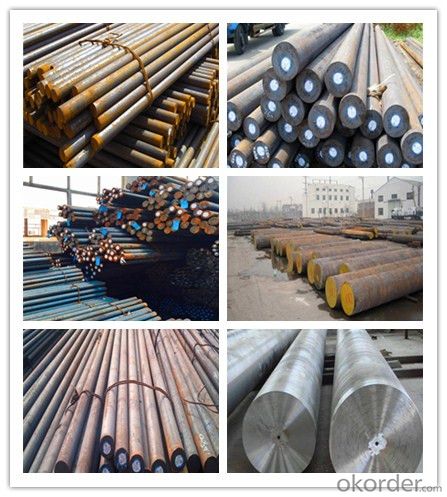
Packing and Delivery:
Packing in bundle package, or as customer's requirements.
Delivery Detail: 45 days after receiving the deposit.
Usage and Applications of SAE1040 Forged Steel Bar
1. Steel round bar is used in a large number of architectural and engineering structures. Or it can be used in construction of plants for the production of steel house frames, high-voltage transmission towers, bridges, vehicles, boilers, containers, ships, etc.
2. And we can use this kind of product on the performance of the mechanical parts if the demand is not very high.
3. Some special material steel round bar can be used for main shaft of steamer, hummer shank, with big section and supper force.
Company Information
CNBM International Corporation is the most important trading platform of CNBM group.
Whith its advantages, CNBM International are mainly concentrate on Cement, Glass, Iron and Steel, Ceramics industries and devotes herself for supplying high qulity series of refractories as well as technical consultancies and logistics solutions.

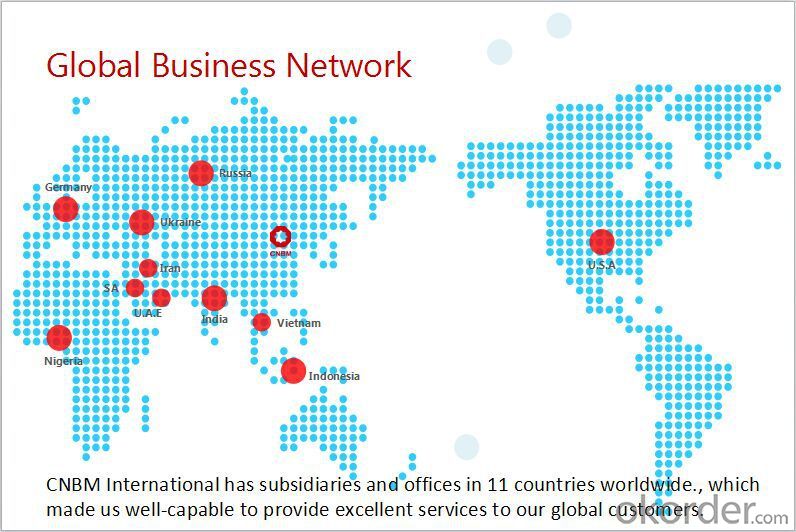
F A Q
1, Your advantages?
professional products inquiry, products knowledge train (for agents), smooth goods delivery, excellent customer solution proposale
2, Test & Certificate?
SGS test is available, customer inspection before shipping is welcome, third party inspection is no problem
3, Factory or Trading Company?
CNBM is a trading company but we have so many protocol factories and CNBM works as a trading department of these factories. Also CNBM is the holding company of many factories.
4, Payment Terms?
30% TT as deposit and 70% before delivery.
Irrevocable L/C at sight.
5, Trading Terms?
EXW, FOB, CIF, FFR, CNF
6, After-sale Service?
CNBM provides the services and support you need for every step of our cooperation. We're the business partner you can trust.
For any problem, please kindly contact us at any your convenient time.
We'll reply you in our first priority within 24 hours.
- Q: Are steel round bars suitable for use in the construction industry?
- Yes, steel round bars are commonly used in the construction industry due to their strength, durability, and versatility. They provide structural support in various applications such as reinforcement in concrete, framing, and the creation of beams and columns. Additionally, steel round bars can be easily fabricated, welded, and formed into different shapes, making them a suitable choice for a wide range of construction projects.
- Q: What are the advantages of using nickel-alloy steel round bars?
- There are several advantages of using nickel-alloy steel round bars. Firstly, nickel-alloy steel has excellent corrosion resistance, making it suitable for use in harsh environments or applications where the material is exposed to corrosive elements. Secondly, nickel-alloy steel possesses high temperature strength and resistance to thermal expansion, making it ideal for use in high-temperature applications such as aerospace or power generation. Additionally, nickel-alloy steel offers good mechanical properties, including high tensile strength and toughness, which make it suitable for demanding applications that require strength and durability. Overall, the use of nickel-alloy steel round bars provides a combination of corrosion resistance, high-temperature strength, and mechanical properties, making it a versatile and reliable material choice in various industries.
- Q: Can steel round bars be used for drive shaft applications?
- Yes, steel round bars can be used for drive shaft applications. Drive shafts are responsible for transmitting torque and rotational motion from the engine to the wheels or other components in various mechanical systems such as automobiles, industrial machinery, and even boats. Steel round bars possess excellent mechanical properties, including high strength, durability, and toughness, which are crucial for withstanding the stresses and loads imposed during operation. They also exhibit good fatigue resistance, allowing them to endure repeated loading cycles without failure. Furthermore, steel round bars can be accurately machined to meet the required dimensions and tolerances for drive shaft applications. They can be heat-treated to enhance their strength and hardness or surface treated to improve corrosion resistance if necessary. Overall, steel round bars are a popular choice for drive shaft applications due to their combination of strength, durability, and machinability, making them well-suited for transmitting power efficiently and reliably in various mechanical systems.
- Q: What are the different types of steel round bars used in the defense industry?
- There are various types of steel round bars used in the defense industry, including but not limited to carbon steel, alloy steel, stainless steel, and tool steel. Each type has specific properties that make them suitable for different applications within the defense sector.
- Q: What are the different types of steel alloy compositions used for round bars?
- There are several different types of steel alloy compositions used for round bars, each with its own unique properties and applications. Some of the most common steel alloy compositions used for round bars include: 1. Carbon Steel: This is the most basic and widely used type of steel alloy composition for round bars. It primarily consists of iron and carbon, with small amounts of other elements. Carbon steel round bars are known for their strength, durability, and affordability. 2. Alloy Steel: This type of steel alloy composition contains additional alloying elements such as manganese, chromium, nickel, or molybdenum. Alloy steel round bars offer enhanced strength, hardness, and resistance to wear, making them suitable for applications that require high performance and durability. 3. Stainless Steel: Stainless steel round bars are composed primarily of iron, chromium, and nickel. This composition gives them excellent corrosion resistance and makes them suitable for applications in environments with high moisture or chemical exposure. Stainless steel round bars are also known for their aesthetic appeal and are commonly used in architectural and decorative applications. 4. Tool Steel: Tool steel round bars are specifically designed to have exceptional hardness, toughness, and wear resistance. They are often used in the production of cutting tools, dies, and molds. Tool steel compositions typically include elements such as tungsten, vanadium, or cobalt to enhance their performance in specific applications. 5. Duplex Steel: Duplex steel round bars are a type of stainless steel that contains a balanced combination of austenitic and ferritic microstructures. This composition gives them excellent strength and corrosion resistance, making them suitable for applications in demanding environments, such as offshore oil and gas industry. 6. High-Speed Steel: High-speed steel round bars are designed to withstand high temperatures and maintain their hardness and toughness at elevated speeds. They are commonly used in the production of cutting tools, drills, and milling cutters. High-speed steel compositions typically contain elements such as tungsten, molybdenum, or cobalt. These are just a few examples of the different types of steel alloy compositions used for round bars. The choice of composition depends on the specific application, desired properties, and performance requirements.
- Q: How do you calculate the weight of a steel round bar based on its volume and density?
- To calculate the weight of a steel round bar based on its volume and density, you can use the formula: Weight = Volume x Density First, determine the volume of the round bar. The volume of a cylinder, which is the shape of a round bar, can be calculated using the formula: Volume = π x (diameter/2)^2 x length Where π is a mathematical constant approximately equal to 3.14159, and the diameter and length are measurements of the round bar. Once you have the volume, you need to know the density of the steel. The density of steel can vary depending on the type and grade of steel being used. The density is usually measured in kilograms per cubic meter (kg/m^3) or pounds per cubic inch (lbs/in^3). You can find the density of steel in reference materials or online. Finally, multiply the volume by the density to obtain the weight of the steel round bar. Make sure the units of volume and density are consistent. For example, if the volume is in cubic inches and the density is in pounds per cubic inch, the weight will be in pounds. If the volume is in cubic meters and the density is in kilograms per cubic meter, the weight will be in kilograms. It is important to note that this calculation assumes the round bar is made entirely of steel and has a uniform density throughout its volume. Additionally, this calculation does not consider any other factors that may affect the weight, such as impurities or surface finish.
- Q: Can steel round bars be machined easily?
- Yes, steel round bars can be machined easily due to their excellent machinability properties.
- Q: What is the maximum nickel content allowed for steel round bars?
- The nickel content permitted for steel round bars can vary depending on the specific steel grade and application. Adding nickel to steel generally improves its mechanical properties, such as strength and toughness. However, excessively high nickel content can negatively affect the weldability and machinability of steel. As a result, industry standards and specifications often establish the maximum allowable nickel content for different grades of steel round bars. To determine the specific maximum nickel content allowed for a particular steel grade, it is essential to consult relevant standards and specifications, such as ASTM, AISI, or ISO. These standards offer comprehensive guidelines and restrictions to ensure the quality and suitability of steel round bars for a wide range of applications.
- Q: Are steel round bars suitable for plumbing applications?
- Yes, steel round bars are suitable for plumbing applications. They are commonly used in plumbing systems for their strength, durability, and resistance to corrosion. Steel round bars can be easily shaped and welded to create various plumbing components such as pipe fittings, supports, and brackets. Additionally, their high tensile strength makes them capable of withstanding the pressure and load requirements in plumbing systems.
- Q: 45# what are the main rounds for?
- 45# round steel refers to the cross section of round solid steel. The specifications are expressed in millimeters of diameter, such as "50", which means a round bar of 50 millimeters in diameter
Send your message to us
SAE1040 Forged Steel Bar
- Loading Port:
- Tianjin
- Payment Terms:
- TT OR LC
- Min Order Qty:
- 100 m.t.
- Supply Capability:
- 500000 m.t./month
OKorder Service Pledge
OKorder Financial Service
Similar products
Hot products
Hot Searches
Related keywords
